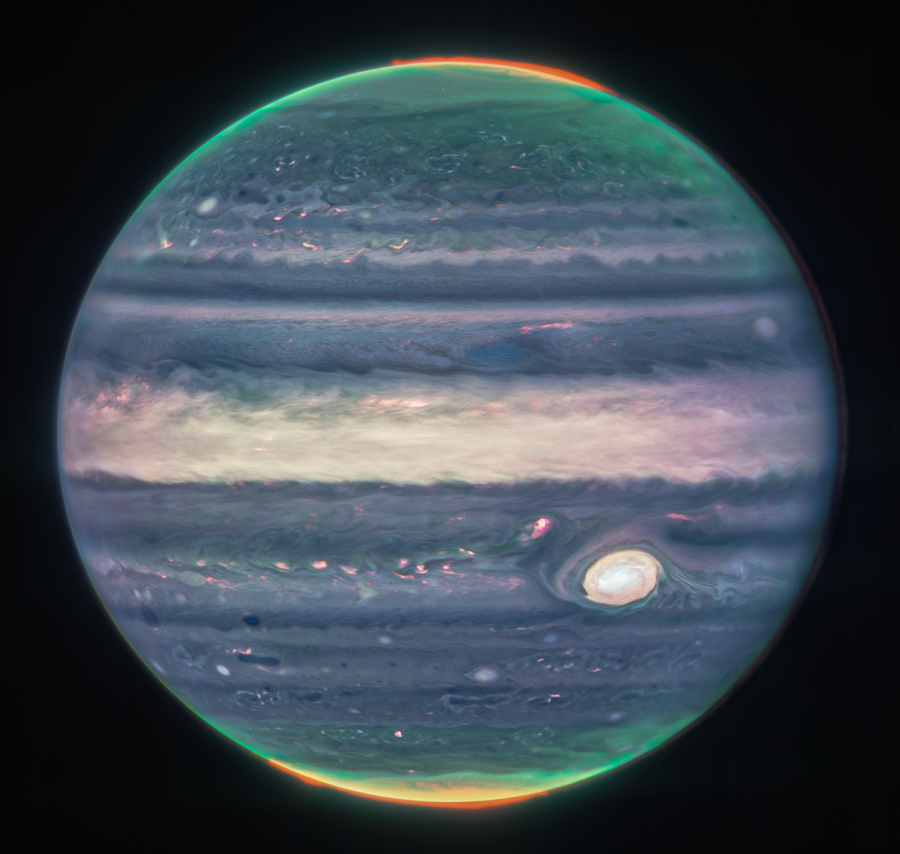James Webb Telescope captures stunning photos of Jupiter
September 3, 2022
NASA amazed the public with the release of two new images of Jupiter.
Taken in July but not released until Aug. 22, the photos of the largest planet in the solar system were captured by the James Webb Space Telescope, an observatory located in space.
Webb captured stunning views of Jupiter’s auroras, or the northern and southern lights. The lights glowed in orange and cyan colors, appearing like hazy crowns.
Jupiter is known for its Great Red Spot, a huge, swirling storm cloud with high pressure. Despite its name, the spot appeared white in the photos because it reflected a lot of light and high altitude, according to interdisciplinary scientist Heidi Hammel in a NASA blog post.
As a gas giant planet, Jupiter has outer rings, but they are not as visible as the ones famously around Saturn. In a wide-field photo, Jupiter’s outer rings appear faintly.
Small but also visible in the photos were Amalthea and Adrastea, two of the planet’s 79 moons.
“We hadn’t really expected it to be this good, to be honest,” Imke de Pater, a planetary astronomer and retired University of California, Berkeley professor, said in a NASA blog post. “It’s really remarkable that we can see details on Jupiter together with its rings, tiny satellites and even galaxies in one image.”
In collaboration with Paris Observatory professor Thierry Fouchet, de Pater led the international mission to observe Jupiter for Webb’s Early Release Science program.
De Pater added that the photos will help astronomers study the chemistry, dynamics and temperature structure of the spot and auroras, according to a press release from Berkeley.
The Webb mission itself is a collaboration between NASA, the Canadian Space Agency and the European Space Agency.
Webb was launched into orbit on Dec. 25, 2021. It is meant to work alongside the Hubble Space Telescope, which launched into Earth’s low orbit in 1990 and is expected to phase out by the 2040s.
Using a wider primary mirror with a diameter of about 6.5 meters, Webb is able to collect 6.25 times more area than its companion. Webb’s large field of view exceeds Hubble by more than 15 times, with better spatial resolution, according to NASA.
Webb’s ability to capture high quality photos is due to its near-infrared camera. It contains three specialized filters for infrared light, which is translated by scientists to become visible. Webb is able to capture a larger portion of the infrared spectrum than Hubble.
NASA previously released high quality photos of galaxies taken by Webb in July.
With the observatory’s ability, NASA hopes to capture more images that will help understand the universe, from the relationship between galaxies and black holes to if there are other planetary systems suitable for living.








